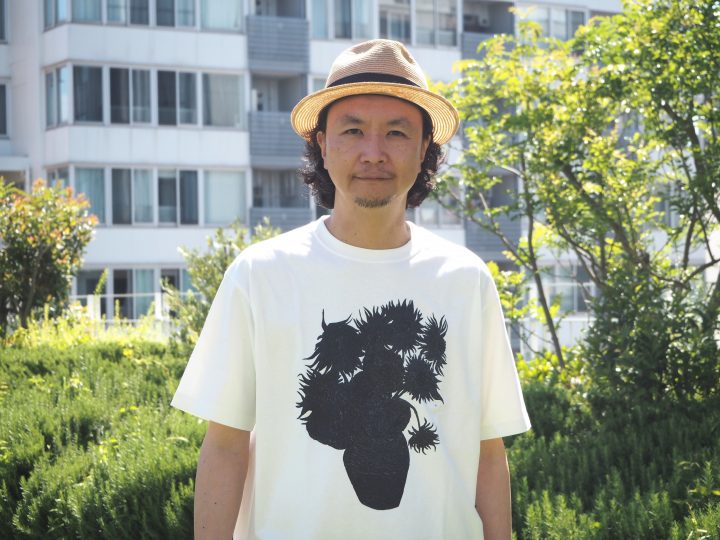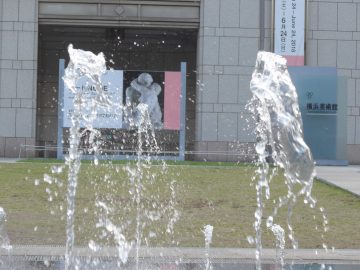Leave your summer vacation homework to us! A museum where you can learn about the Earth and discover Kanagawa
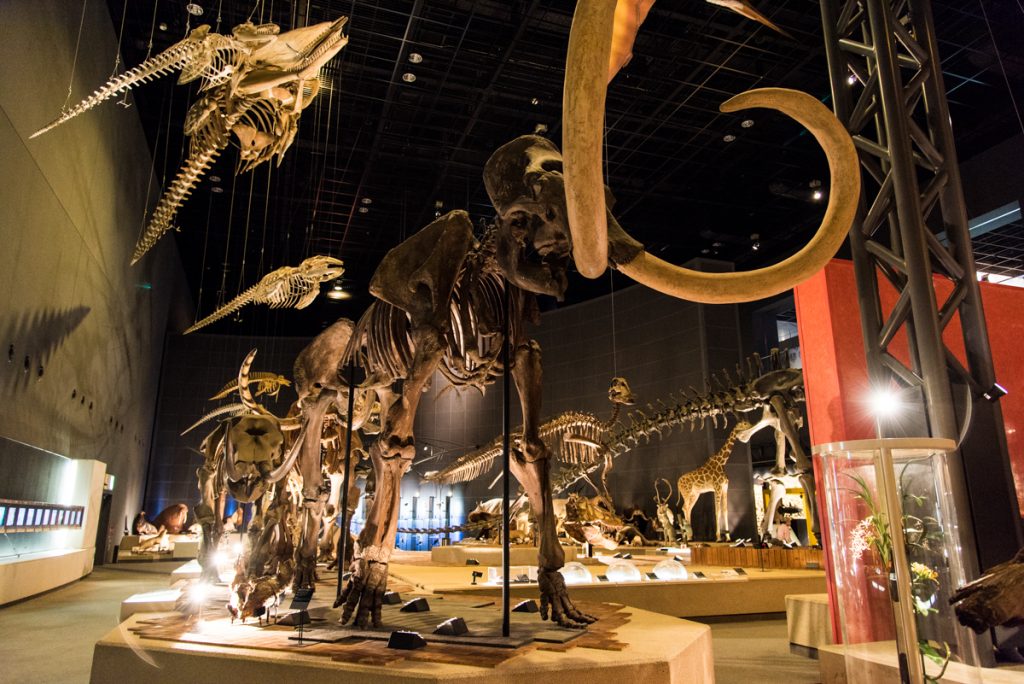
A world of art to visit, see and feel
File.3 Kanagawa Prefectural Museum of Natural History
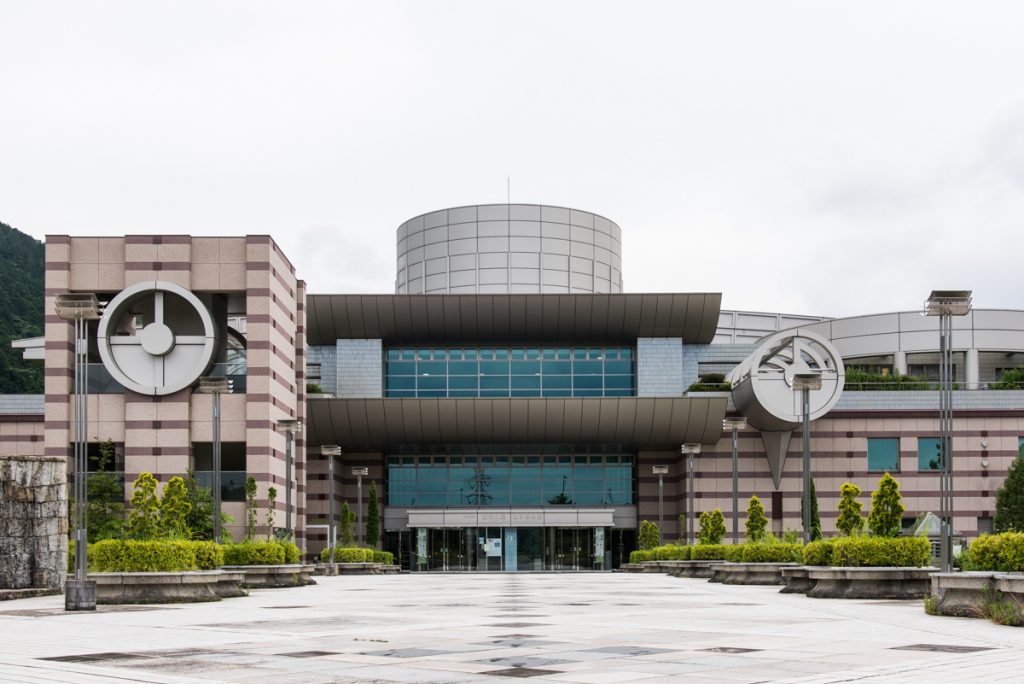
It has been 4.6 billion years since the birth of the planet Earth, home to life. This museum allows you to learn about its history and the diversity of life in an easy-to-understand way, following the flow of time. There are about 10,000 life-sized specimens, ranging from giant dinosaurs to meteorites and pea-sized insects. The exhibits, which tell a story, are fun to just look at, but if you take your time to look around, it is so packed with content that it will likely take you a whole day, so be careful.
Whether you like geology, space, animals, insects, plants, or fish, you have to go. Just GO!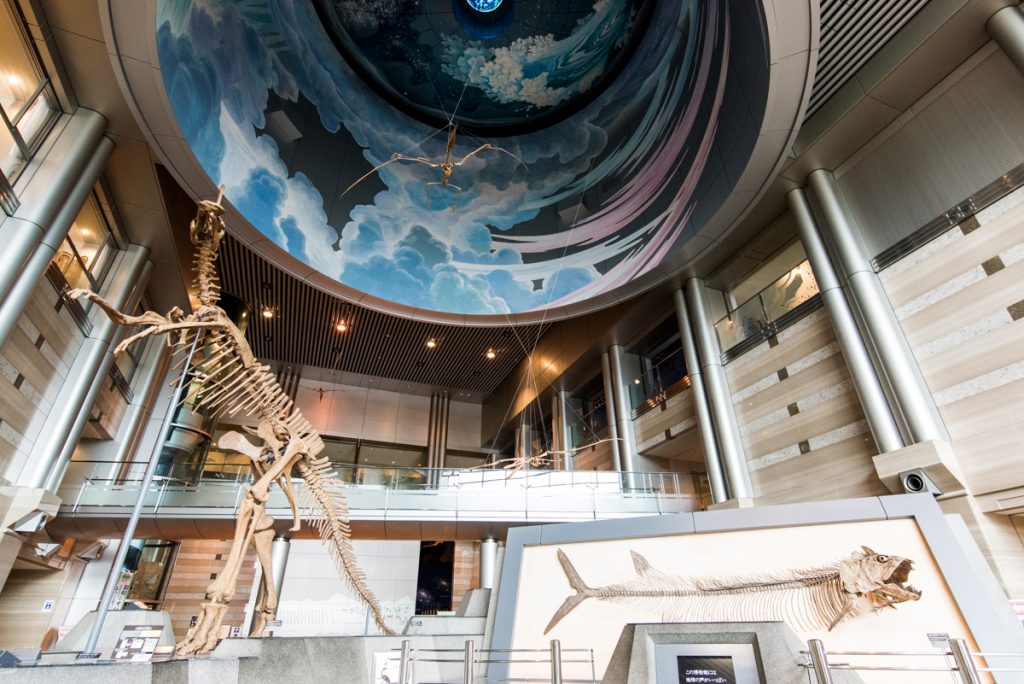
The entrance ceiling depicts a vast universe. Below it, visitors are greeted by a display of fossils of life that have marked history in various spaces on Earth, including the sky, land, and sea.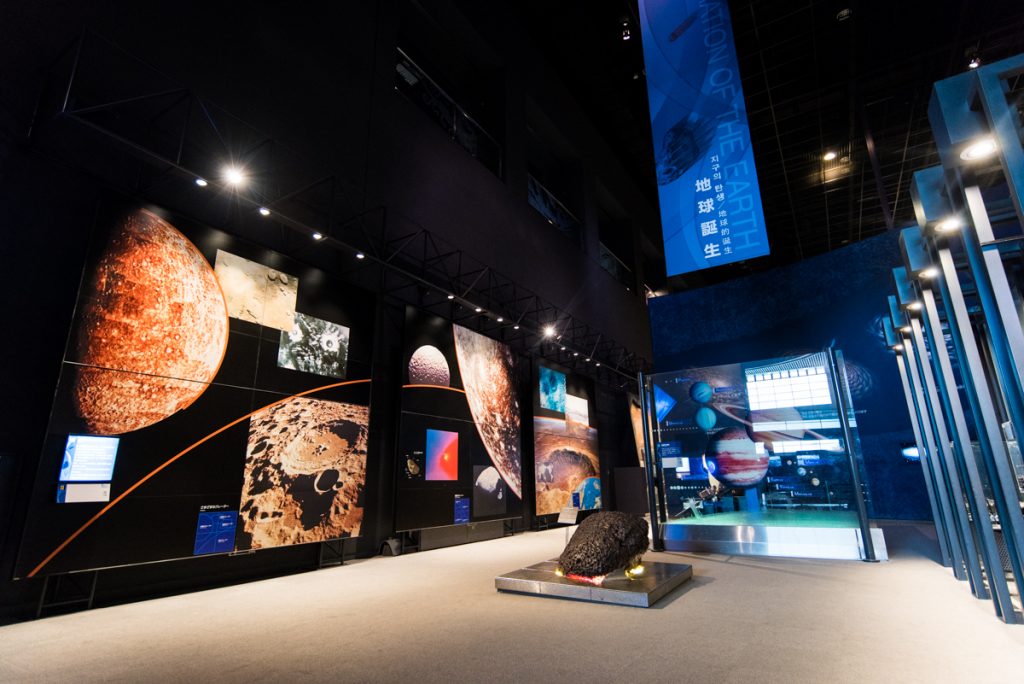
The first theme on the first floor is "Thinking about the Earth."
No one has ever seen the moment the Earth was born, so meteorites from space are used to solve this mystery. Fragmentary information extracted from various meteorites is pieced together to expand the image of the creation of the heavens and the earth.
The romance of scientists is somehow amazing.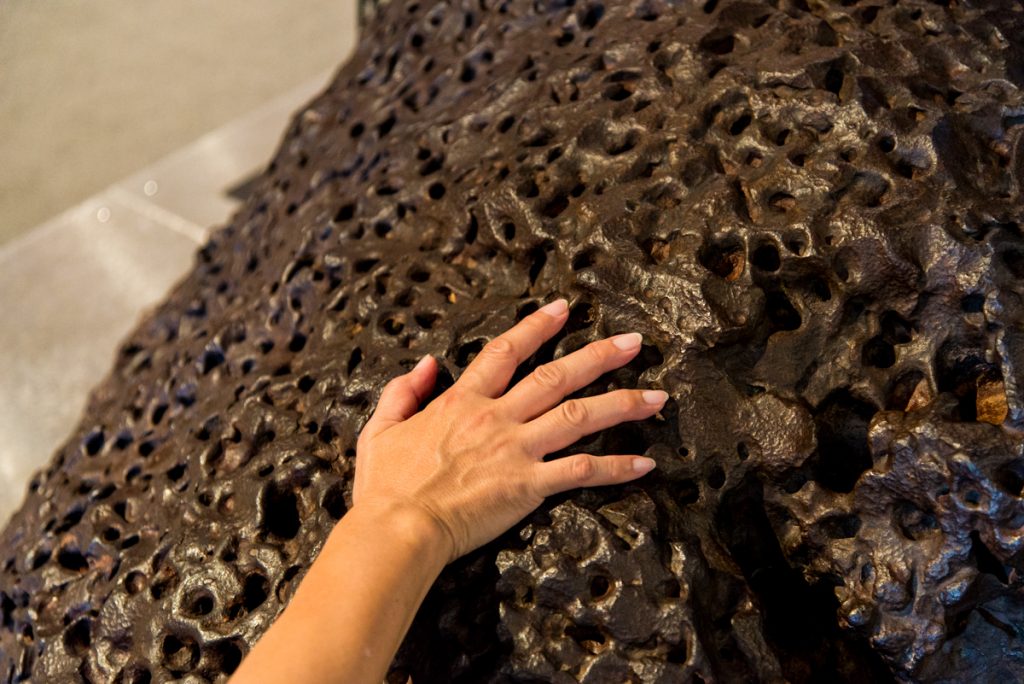
The one in the center is the "Mandrake meteorite" that fell in Australia. It weighs 2.5 tons and is, of course, the real thing. It is mostly made of iron, so if you touch it and smell your hands, you can definitely smell a bit of rust.
In the museum, you can touch all the exhibits that are not in cases or covered by fences. Use all your senses, including touch and smell, which cannot be conveyed through online images, and think about the history of the Earth and life.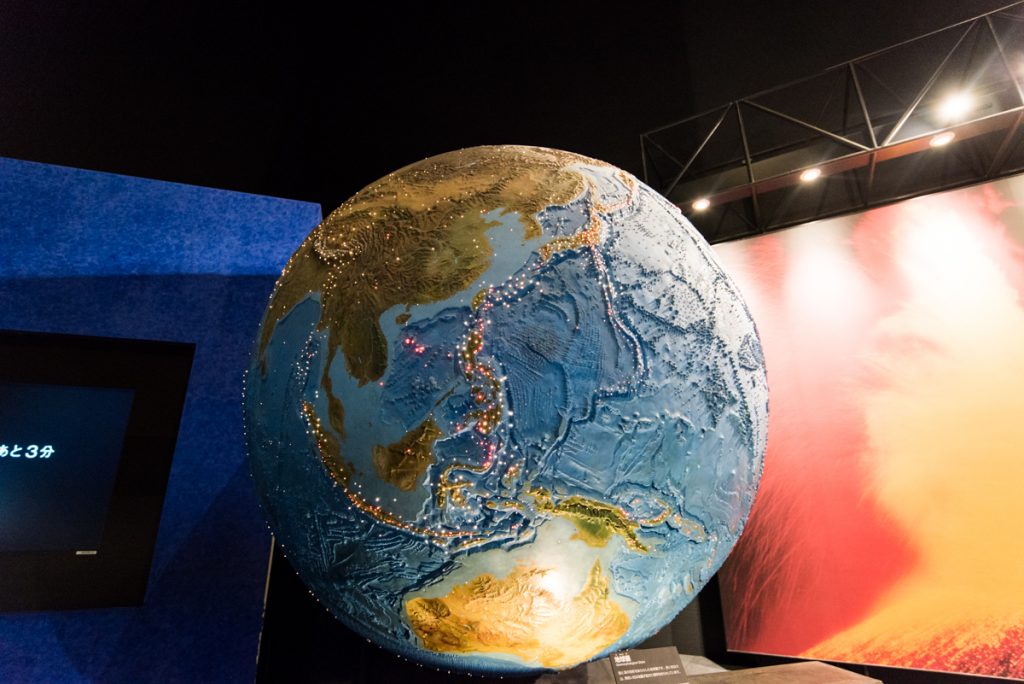 This globe shows earthquake epicenters and volcanoes with white and red light bulbs, respectively. In areas where ancient civilizations flourished, such as Africa and the Middle East, or in areas where Western cities are concentrated, there are hardly any light bulbs lit. In contrast, the Japanese archipelago is so covered in red and white light bulbs that the islands are barely visible. It may be a miracle that cutting-edge cities have developed on such unstable ground.
This globe shows earthquake epicenters and volcanoes with white and red light bulbs, respectively. In areas where ancient civilizations flourished, such as Africa and the Middle East, or in areas where Western cities are concentrated, there are hardly any light bulbs lit. In contrast, the Japanese archipelago is so covered in red and white light bulbs that the islands are barely visible. It may be a miracle that cutting-edge cities have developed on such unstable ground.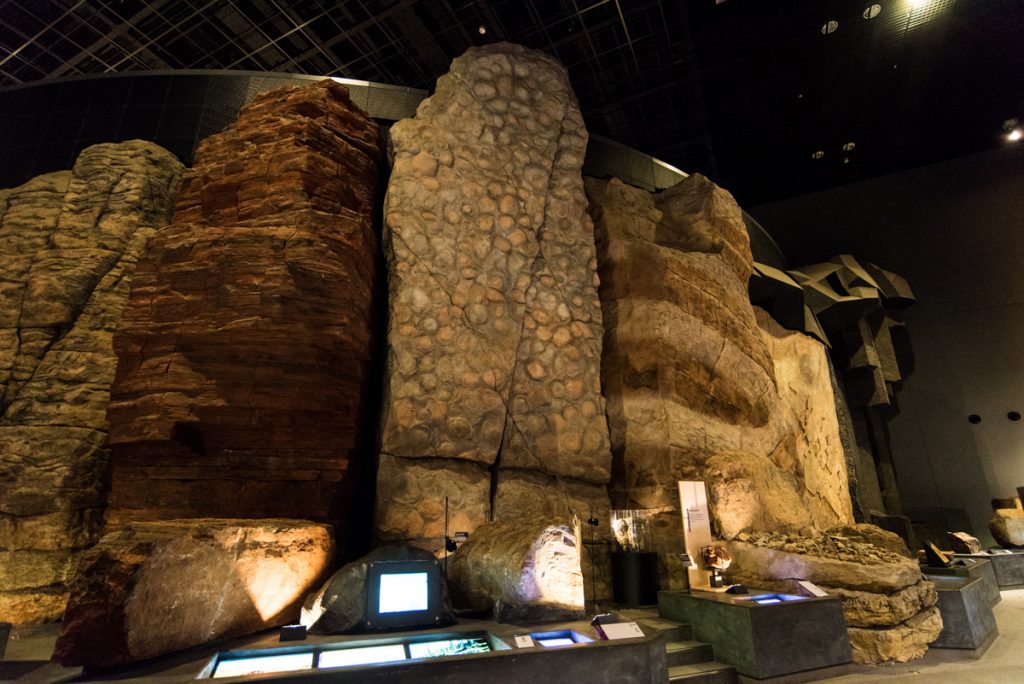
Whether life was born there or not, the "strata" are full of stories. I don't really understand the complex parts, but it's really impressive!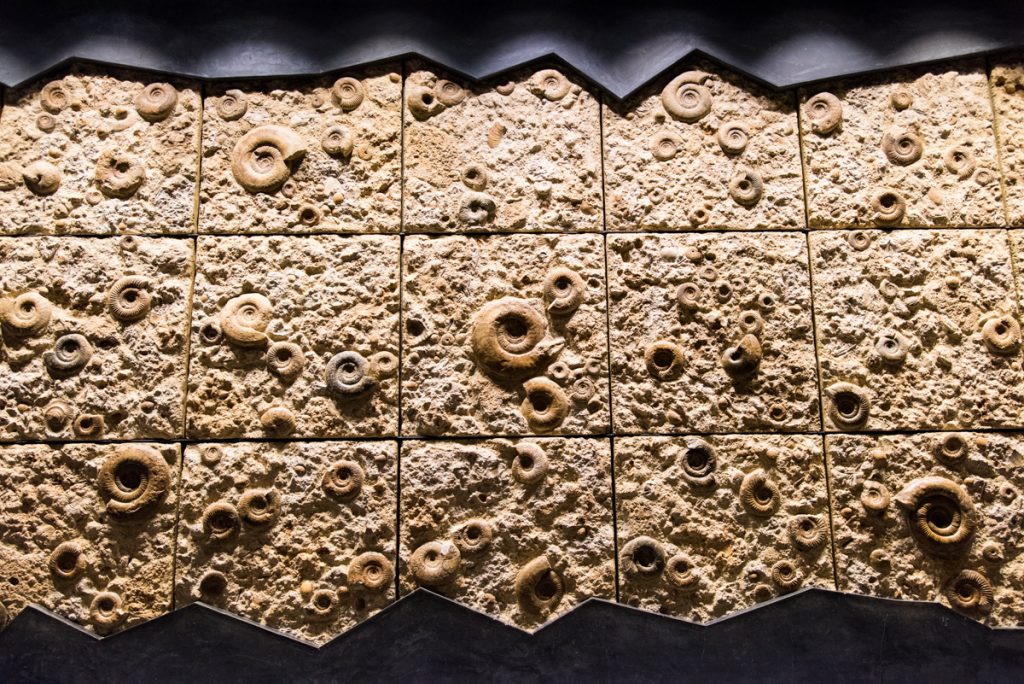
The second theme is "Thinking about life."
Bacteria, which can be said to be the origin of life, appeared on Earth about 2 billion years ago. It took another 1.5 billion years for trilobites and other creatures to appear.
And 100 million years ago, the familiar "ammonite" appears. This layer is of course real. If you look closely, you will find the ancestors of nautiluses, bivalves, and snail shells hiding there.
The parts within reach have been polished to a shine by everyone's hands. It could be said to be the remains of a treasure hunt.
The exhibit also shows the process by which underwater creatures came onto land and evolved into amphibians and reptiles.
But it's the fossils of large animals that really get you excited. Dinosaurs and elephant relatives (such as mammoths) have an overwhelming presence in the main hall.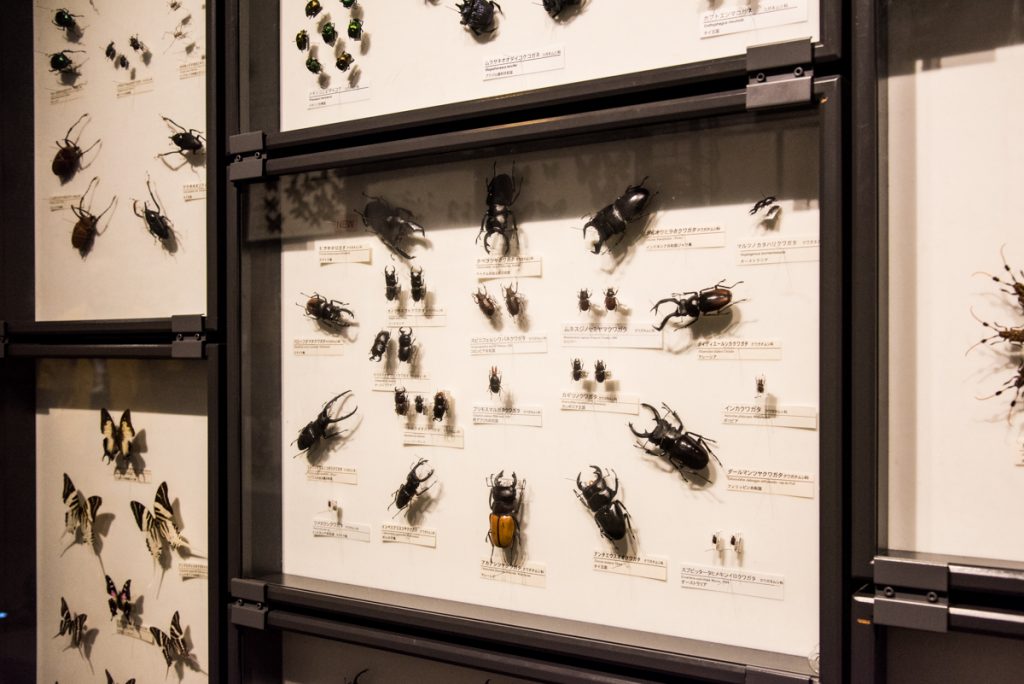
A must-see for insect lovers, this is a comprehensive collection. I apologize for coming at it from a human perspective, but the shapes of insects are truly bizarre and mysterious.
Of course, they are all valuable natural history materials.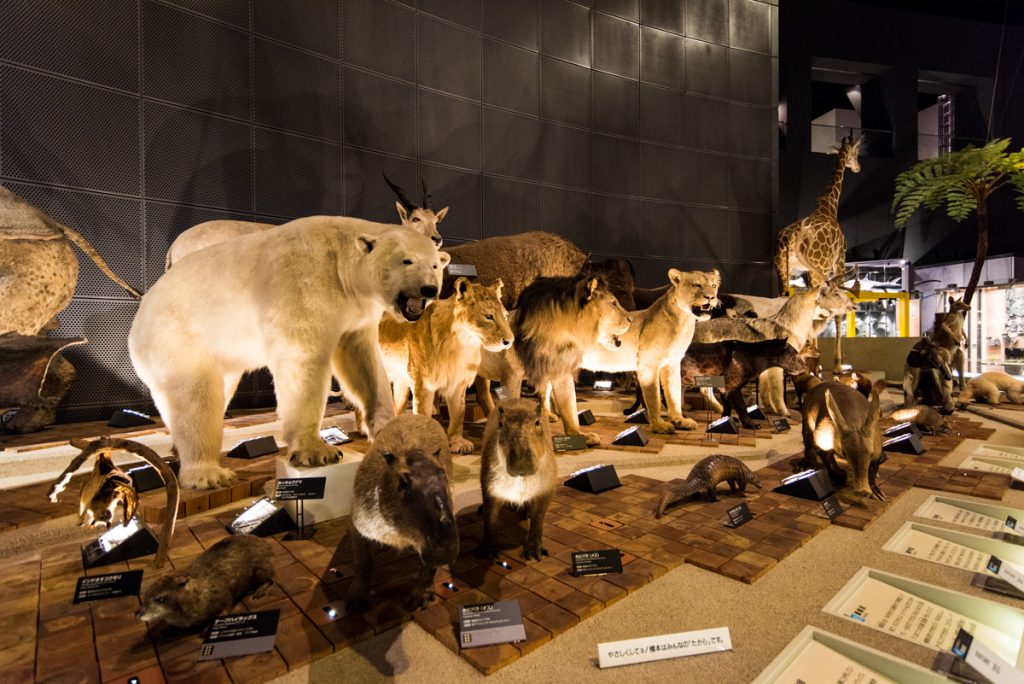
As the dinosaurs became extinct, mammals adapted to various environments began to spread their influence over the Earth. About 6,500 years ago was "very recently" in the history of the Earth.
Here, representative creatures from every "order" of mammals are selected and exhibited in stuffed specimens. When you think about it, it's a little strange to see animals that would never meet under normal circumstances lined up together, seemingly on friendly terms. That's what makes it different from a zoo, but what's really amazing is that you can get up close and personal with the animals, almost nose-to-nose. The sharp teeth of carnivores and the size of brown bears really feel real when you see them up close.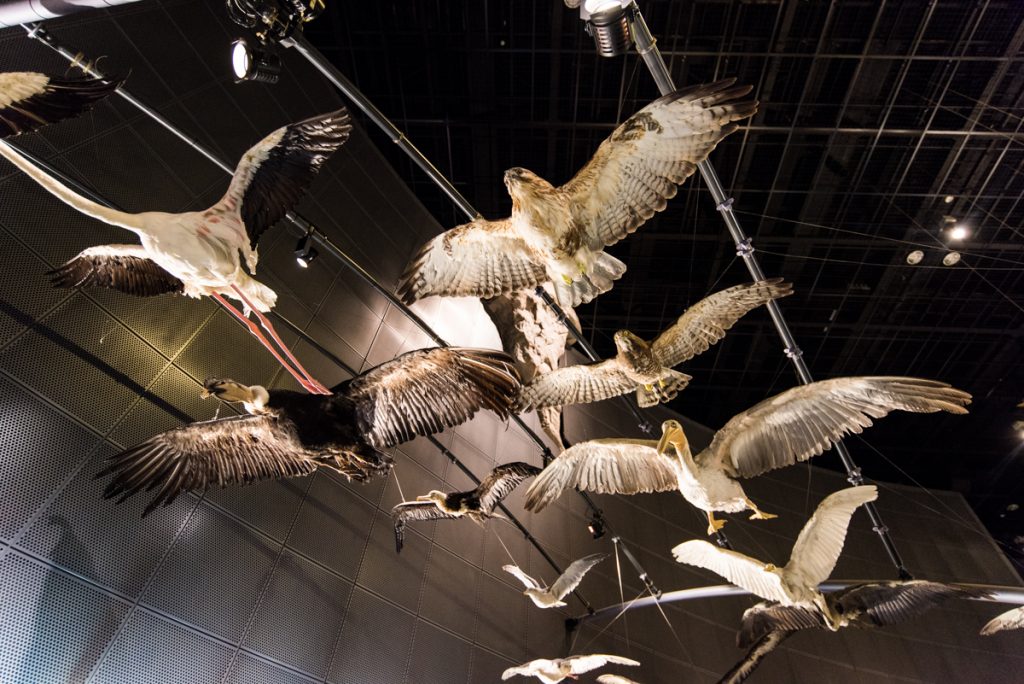
A flock of birds is flying above the hall.
If you look closely, you can see the waterfowl flying as well.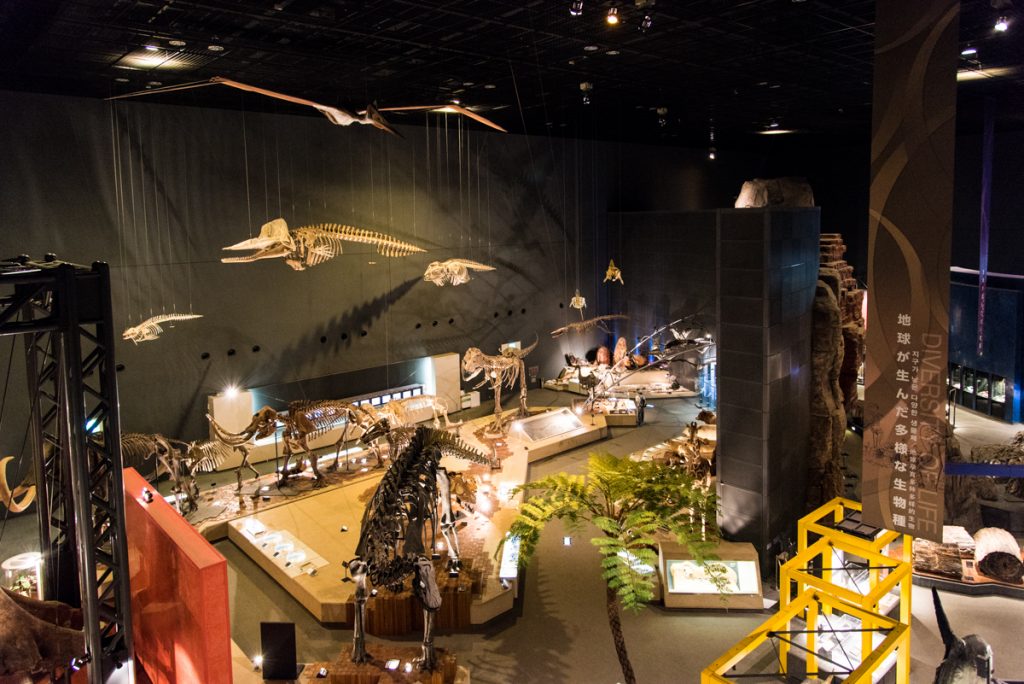
Looking down at the hall on the first floor from the escalator going up to the upper floors, you feel like a bird.
There are points of interest next to the escalators such as "the eye height of a mammoth" and "the eye height of a Tyrannosaurus Rex," so be sure to check them out.
However, please note that the escalator cannot stop at that position.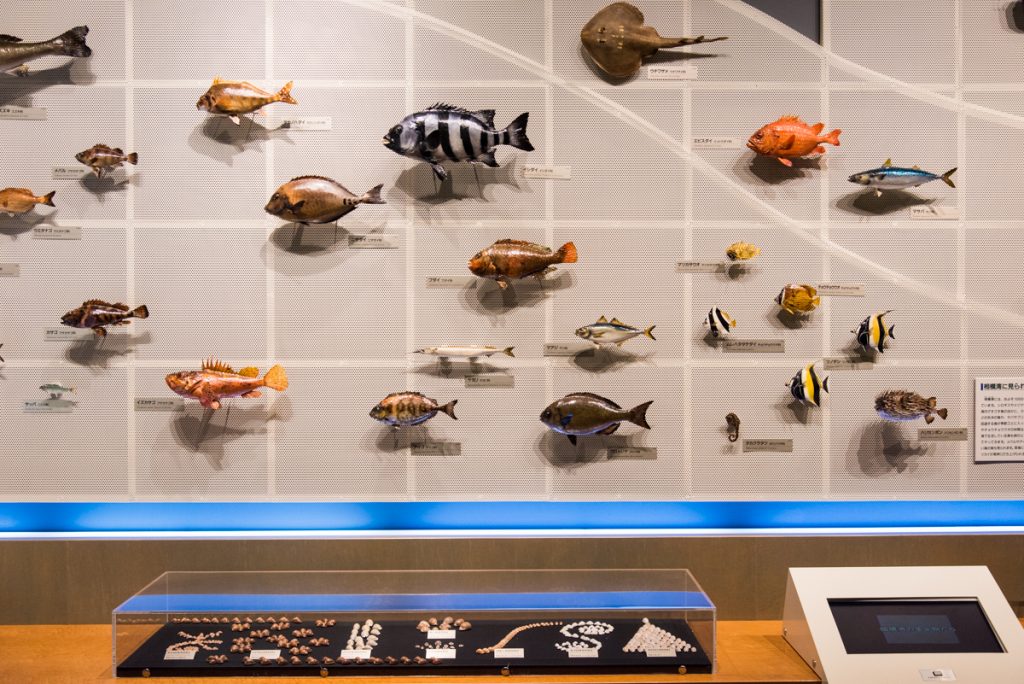
The first theme on the third floor is "Thinking about Kanagawa's nature."
Let's look at how the land we live on was formed and what kind of plants, animals and marine life has been nurtured there from a local perspective. Kanagawa is located on the point where three of the four plates on which the Japanese archipelago sits collide, so it seems to have a great diversity of vegetation. In addition, Sagami Bay, famous for its overwhelming depth, is said to be home to a rich variety of fish species that overwhelms other regions in the country.
Rather than being interested in natural history, I was excited imagining the menu at a sushi restaurant.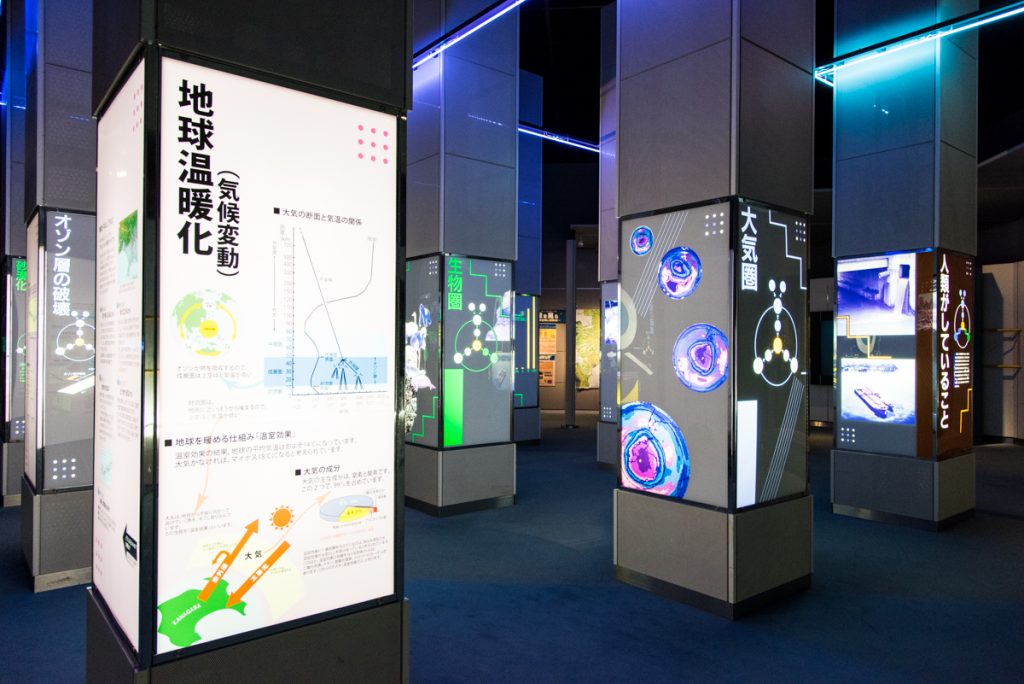
The final theme was "Considering coexistence with nature - the present and future of humanity."
In the natural world, the balance of matter has been maintained through the circulation of materials between the atmosphere, water, the earth's surface, and living organisms. In recent years, the activities of humans, who are just one part of the life on Earth, have had a major impact on this balance.
From this point on, the exhibition will focus on data, rather than easy-to-understand specimens and models. It may be a little difficult, but I would like to take a moment to stop and think about what the data shows.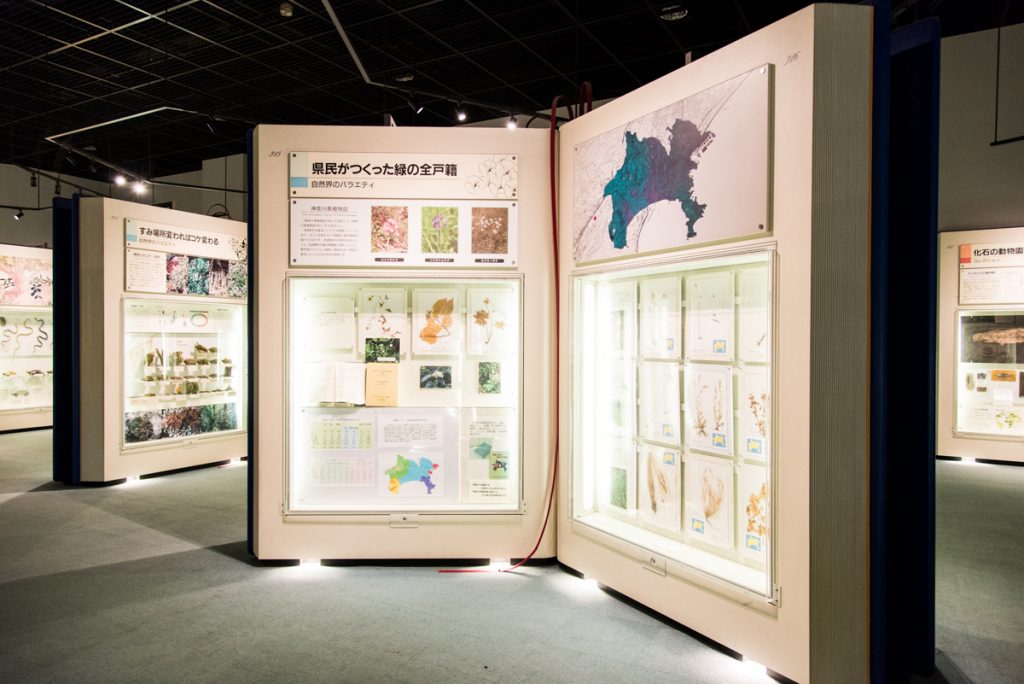
The last place is the "Jumbo Book Exhibition Room."
There are 27 3.2-meter-tall encyclopedias filled with real specimens. The exhibits can be changed one by one, allowing for a high degree of freedom in displaying items according to the season or current events. The world of science is always full of new discoveries, so it's only natural to have such a mobile exhibition corner.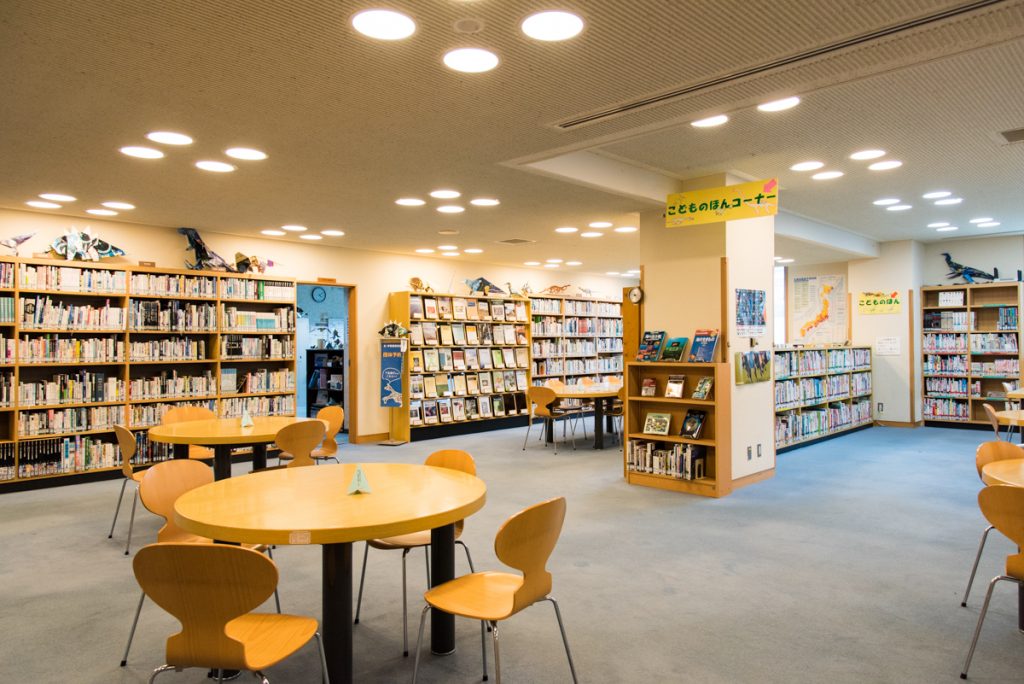
When you go down the stairs to the second floor, you will find a library filled with nature-related books.
During the summer vacation period (until August 19, 2018), guidance counselors will be on hand to give children advice on independent research in the field of science. Once a research topic has been decided, the museum's curators will also be happy to help with searching for and compiling more detailed information, so feel free to ask them for advice.
Once you've put together an interesting report, why not submit it to the museum's "Children's Natural Science Exhibition" !
